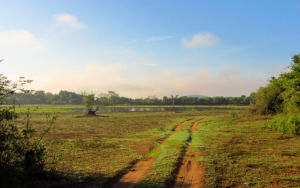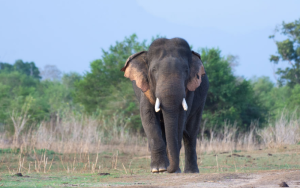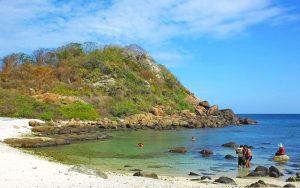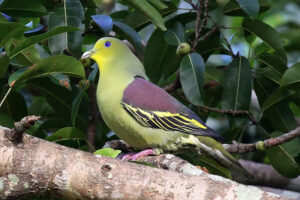Ridi Vihara is a Raja Maha Viharaya located in the Cultural Triangle. It is a place of pilgrimage. This cave temple is located in the Ridigama Divisional Secretariat of the Kurunegala District, roughly 23 kilometers from Kurunegala and 113 kilometers from Colombo. It is also a Buddhist temple.
The history of Ridi Viharaya dates back to the 2nd Century BC, and it is believed that King Dutugemunu was the architect of the structure. As told by the Mahawamsa, the legend surrounding Ridi Viharaya is connected to the legendary Ruwanweli Maha Seya.
According to the legend surrounding Ridi Vihara, a merchant was traveling through the area on a road that ran from Anuradapura to Hill Country (Malaya rata), which was close to this location. He had come across a Jackfruit and offered it to an Arahant who happened to be living in the neighborhood at the time. After devouring the fruit, the Arahant directed the merchant in the direction of a cave containing a Silver Ore, which he had discovered while traveling through the forest. He had traveled to Anuradhapura and told the account of how he had discovered silver to King Dutugemunu, who had listened attentively. It was the king who had utilized this silver to compete in the “Ruwanmeli Maha Seya” competition. The king had built a temple at the site of the silver discovery as a token of his thanks. In subsequent years, the village where the temple was built came to be known as Ridigama or Silver Village, and the temple itself
Ridi Vihara is a Raja Maha Viharaya located in the Cultural Triangle of Sri Lanka. It is also a Buddhist temple, and its history dates back to the 2nd Century BC. Legend has it that this cave temple is connected to the legendary Ruwanweli Maha Seya.
According to the ancient chronicle “Ridi Vihara Asna,” a cart carrying a gold-plated Buddha Statue from India, carried by King Dutugemunu, became caught between some rocks and was unable to be lifted. The Arahant Indragupta Thera (the monk who taught the merchant the path to the silver ore) had noticed this and created a mechanism for the statue to fly through air all the way to the temple, which is where it is now. Supposedly, this statue is the one that can currently be found inside the Maha Viharaya, where it is protected by a glass enclosure.
It is possible to separate the main Vihara complex into two parts: “MahaViharaya” (the main temple) and “UdaViharaya” (the upper temple). The Maha Viharaya, which is housed within a vast rock cave constructed by King Dutugemunu, includes the original gold-plated Buddha Image, which is believed to have been gifted by the king. The Uda Vihare was constructed by King Kirthi Sri Rajasainha (1747 – 1781) during his reign as king of Sri Lanka.
The entrance to the Uda Vihare is through a protected door frame embellished with ivory carvings, which is an incredibly unique feature in this area of the world. A carving of five interwoven female figures known as “Pancha Nari Getaya” may be discovered in this location.
A gold-plated Buddha statue from India is believed to have been gifted to Sri Lanka’s Vihara complex by King Dutugemunu. The Uda Vihare was constructed by King Kirthi Sri Rajasainha during his reign as king of Sri Lanka.
Apart from that, the ‘Waraka Welandu Viharaya’ or Jackfruit treat temple occupies an important position, and it is said that it was in this cave that the Arahant consumed the Jackfruit supplied by the merchant. This structure has a lot of parallels to the “Devala” design. A female dancer is carved into each of the eight stone pillars supporting the main roof of the structure, which is unusual for Buddha-image houses. The structure is thought to have been constructed during the Polonnaruwa period.
Some murals painted on the cave wall right above the ceiling of Maha Viharaya, depicting an image of the Buddha and a large number of monks, have been discovered. Rainwater is channeled away from the paintings through “Kataram,” or small carved-out drains, which are incorporated into the cave walls. The cave’s inside walls are covered with murals depicting scenes from Gauthama Buddha’s life, which are arranged in chronological order.
This temple organizes an annual procession known as the “RidiViharaPerehara,” which is a big cultural event in this area that takes place in the month of August following the Mahanuwara Esala Perahera (Mahanuwara Esala Festival).
A female dancer is carved into each of the eight stone pillars supporting the main roof of the structure, which is unusual for Buddha image houses. Murals painted on the cave wall right above the ceiling of Maha Viharaya depict an image of the Buddha and a large number of monks.
The route to RidiViharaya is mentioned below.
Kurunegala>Mallawapitiya>Ridigama>RidiViharaya
Image Credits: krazybutterfly.com
Where to Stay
For those planning a trip to Ridi Viharaya, we recommend booking your accommodations through our partner “Booking.com” which allows us to earn a portion of the revenue generated by your booking which helps us to the creation of high-quality content like this. Even if you are unwilling to do so, you can still enjoy the article and learn something you may not have known before.










